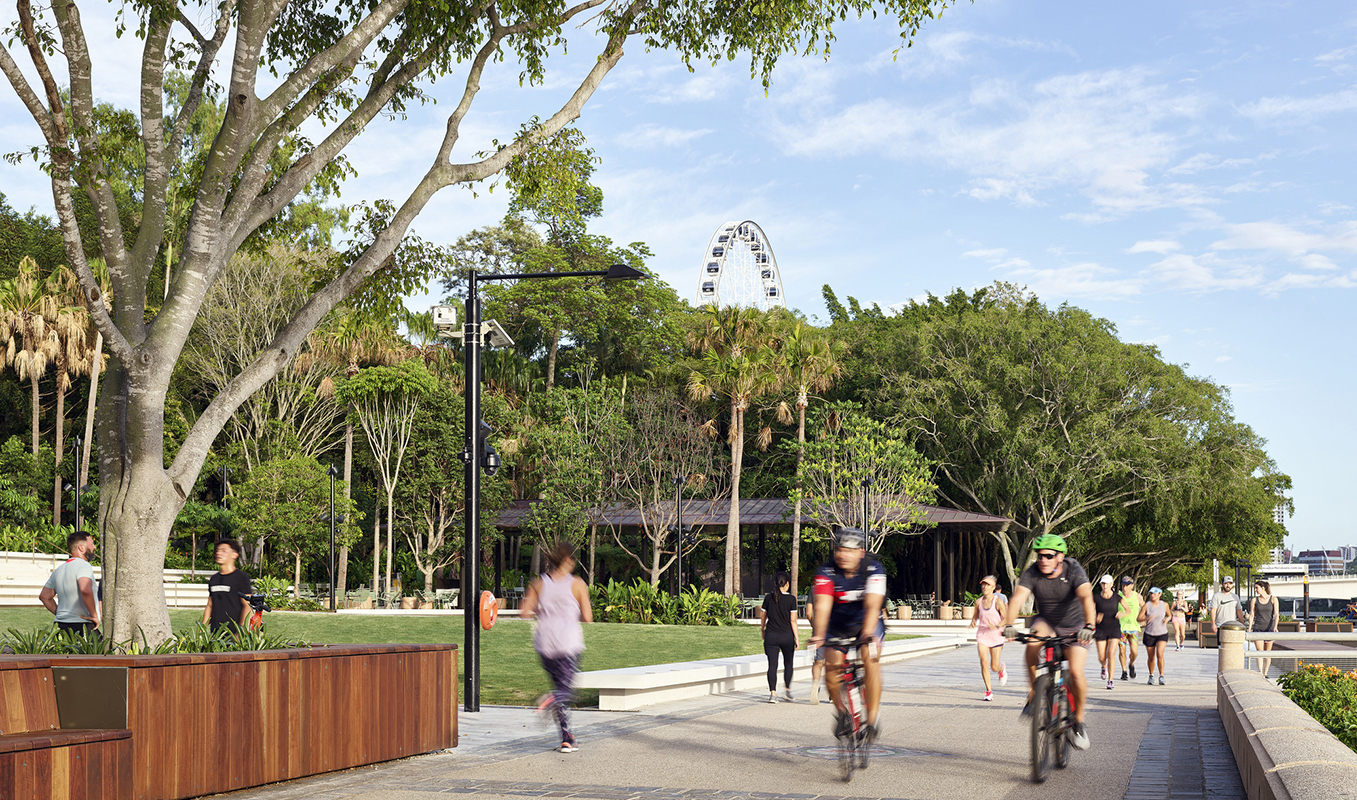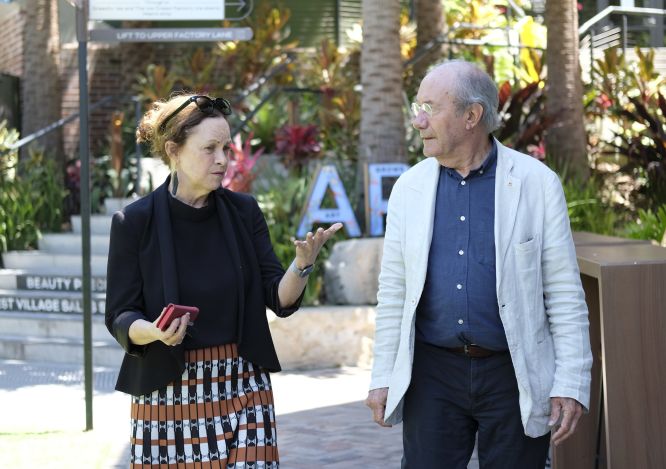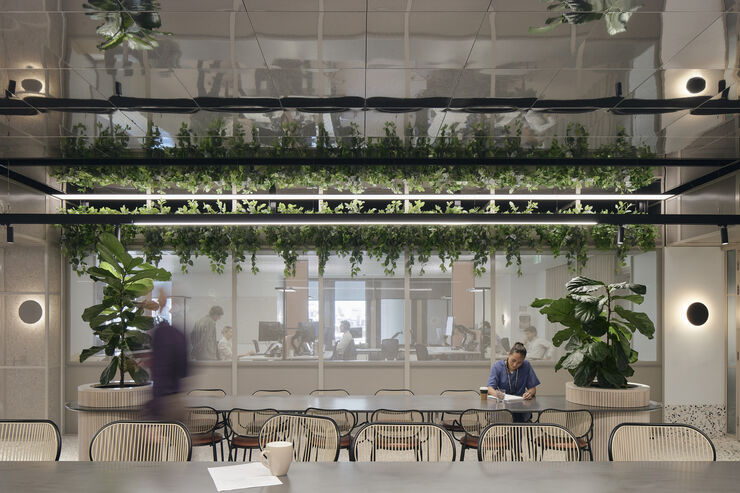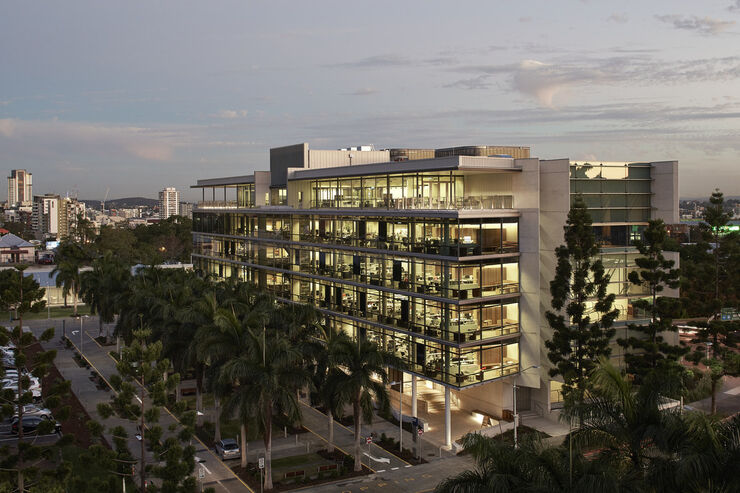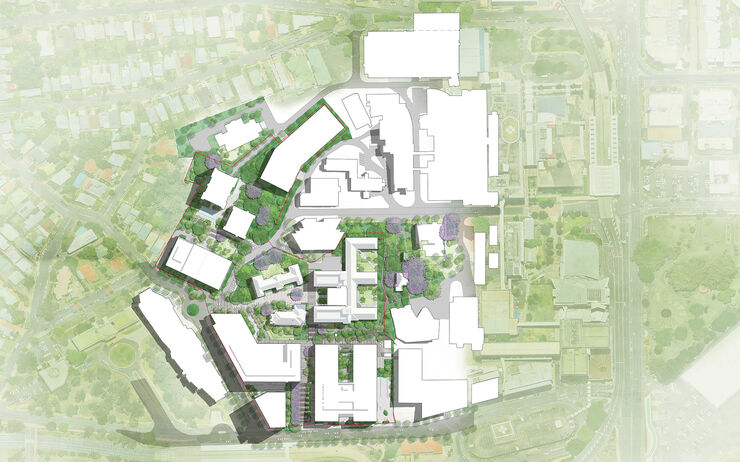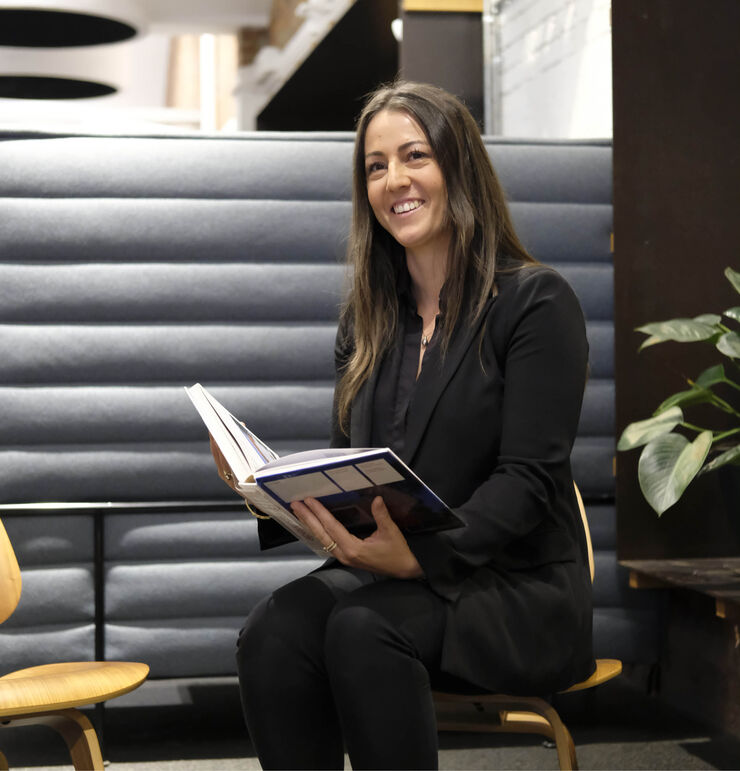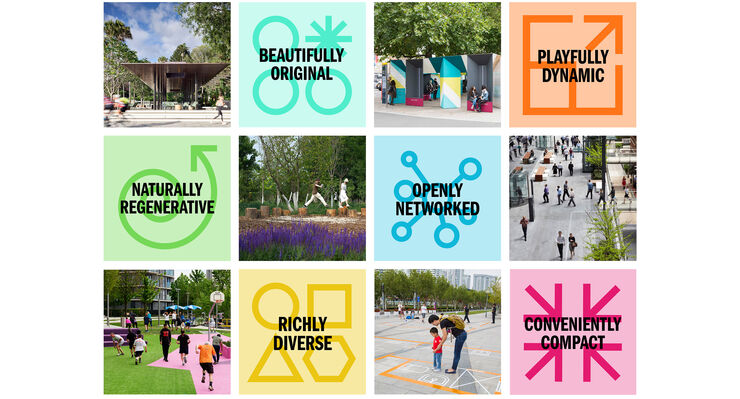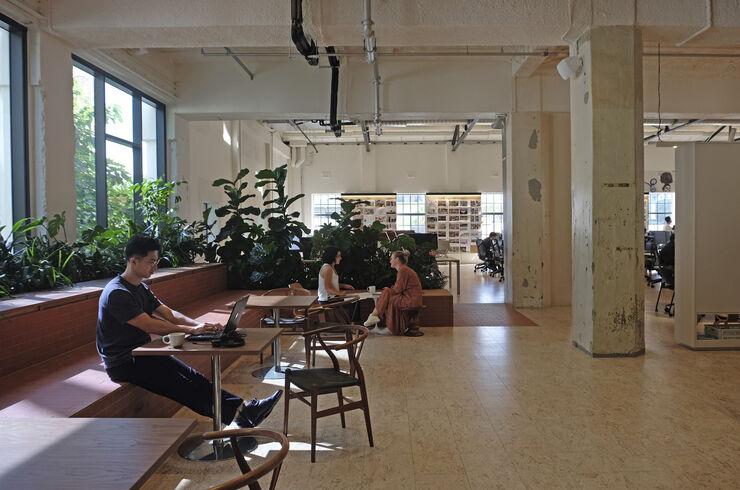Transcript
Caroline Stalker:
From global design practice Hassell, this is Hassell Talks, a podcast series looking at a changing and complex world and the opportunities for design to create a better place for everyone. It’s a series that is unashamedly optimistic about creating a beautiful, inclusive and resilient future.
I’m Caroline Stalker. I’m an architect and urbanist and a principal at Hassell, and I’m here on Jagera (Yuggera) and Turrbal country in Brisbane, and I pay my respects to elders past and present.
In 2032, Southeast Queensland, a region with the city of Brisbane at its heart, will host the Summer Olympics. This is an area that’s home to 3.8 million people, covering approximately 35,000 square kilometres. On a good day, it would take you three hours to drive from one end to the other. For Brisbane and the region, the Olympics are an extraordinary opportunity for our community, our economy and our culture, and this is reflected in a palpable level of excitement in the media and in discussions we’re all having around town. At the same time, we’re really only just beginning the important discussions in the city and the region around design, discussions like what will be the legacy of the Olympics? How will it deliver benefits to all, not just the few?
As a Brisbanite with a great deal of affection for the place I want to explore what opportunities lie ahead for our public city. What could the next era of public spaces deliver? And how will these be catalysed by the Olympics? What kind of city can we make? There’s actually never been a better time to talk about the future of our city. And to really understand the role of public realm in ensuring a successful games and city, I’ve invited some friends and colleagues who have seen firsthand the changes brought about by major events in cities, particularly in Sydney Olympics in 2000, and how that change affected people throughout the city.
I’m very pleased to introduce architect, landscape architect, urban designer and Hassell fellow, Ken Maher AO, who has shaped the physical and cultural landscape of Sydney and beyond for over four decades. And Helen Lochhead, Emeritus Professor of Architecture and Urbanism at University of New South Wales. Welcome, Ken and Helen.
The government here in Queensland has some very clear outcomes it wants to see as a result of these games in 2032. The government wants it to deliver economic benefits, social benefits, environmental benefits, indigenous culture celebrated and promoted and greater engagement in sport for all Queenslanders. So these are the stated aims, legacy aims by the Queensland government. It’s interesting to me and it’s the basis of this conversation, I guess, that the broader conversation in the city to date has not included much focus on public realm, which we believe is essential in the successful delivery of the Olympic Games and in sharing the economic, social, environmental and cultural benefits we all want to see. And I think that’s been illustrated very clearly by what you’ve both said so far.
Helen, thinking back to the time leading up to the Olympics in Sydney, when you were involved in the work of delivering the games, where did the urban realm fall in those discussions? Was there a vision?
Helen:
Yes, yes, there was a strong desire for a vision. I was working for the City of Sydney at the time, and the lord mayor then was Frank Sartor who wanted people in the city. And his pitch I guess, was for Sydney to be a living city, a place to live and work and play. That was what he ran with to be elected, and so he was very keen to use the opportunity to capture people’s imagination and get people in the city 24/7. At that time, people just worked in the city and went home to the burbs. So after dark it was dead. So with his support, I developed a series of speculative projects or blue sky projects as we called them back then, for the city’s streets, squares and parks. That was in 1994. And the real opportunity, or what was great about it as I thought, was that we commissioned young and emerging designers and artists and we partnered them with more established architects and landscape architects to develop concepts. So they were truly speculative about what could these places be, what were the possibilities? They were all open-ended in the questions.
We really engaged with a variety of people, from the young and emerging through to the established for two particular reasons. One, we wanted that expertise and deep understanding of the city, but we also wanted fresh and out of the box thinking. And the thought of emerging designers and artists and people who are not always engaged in work in the public domain was really the spark that actually took these ideas from being predictable and conservative to sometimes exploratory and exciting. And the brief was very short, but was really about engaging with ideas and concepts. So hence the term blue sky.
So with that, we developed a series of city talks to talk about these projects. We developed a publication and exhibition and from that initiative we attracted a lot of attention. And so we were able to get the commitment from Council to fund many of these projects through the sale of major public parking stations and other utilities that were not core. But it was also through that commitment that Council was able to attract state and later some federal government funding to actually take it from the priority one projects to the priority two and priority three. So that whole portfolio of hundreds of millions of dollars of projects were able to be fulfilled over a period of years leading up to and following the Olympics.
And I have to say that vision still rings true. And subsequent mayors and the current Lord Mayor who is our longest standing Lord mayor continues that vision. And I think she’s taken it up many notches in terms of design excellence, in quality, in that real commitment to get people into the city, to make it a living city, to be make it a part of a living community. I think it really is a much more livable, green, inclusive place. And the city’s been transformed I think over the past 20 years. Don’t you think, Ken?
Ken:
Absolutely. I think that planting of seeds, if you like, around the value of the public spaces that happened prior to the Olympics, has borne incredible fruits, so to speak, because it has continued and it’s got more so. And again, the pedestrianisation of the city, the shift from cars to people has continued. The city got Jan Gehl, the Danish urbanist, to help think through or give confidence perhaps to the politicians and that transformation, we now have our major street, George Street is a pedestrian and light rail street, and that was inconceivable even 10 years ago. So it’s been an extraordinary legacy. But Caroline, I also think that understandably, when the early planning is taking place for the Olympics, there will be a focus on the venues and there will be a focus on the venues sometimes at the expense of or not combined with thinking about the broader precinctual issues.
But I do think, as Helen has touched on, that might change as get closer and closer to the time. I also think that it’s about the layers of government and that it’s the local government where the focus can be on the local places and spaces, and they’re the ones that are really important. I think it might be a combination of local and state government that start to focus on the precincts around some of the venues. I know the venues are quite dispersed. And then there’s another challenge around what are the connections between those venues? And that sometimes comes through the transport authorities. And all these groups, I think in our time now, have great benefits, and it wasn’t the case back with the Sydney Olympics, but each of these authorities are more and more aware of the value of public places, even design, landscape architecture, et cetera.
My involvement, apart from doing one of the projects [inaudible 00:18:49] of Sydney’s spaces, was essentially around the master planning in the public realm of the Olympic site. But it was a very large site, and also had the privilege of working on the design of the Olympic Park rail station, which was a key transportation node. And these are the sorts of things that I know are already happening in Brisbane and very interested in hearing from you, in terms of those kind of opportunities as well.
Caroline:
Well, I think I’ve found these stories about the professional community getting together to build a vision, very relevant because I think you’re right, Ken, things are happening here through different layers of government and there is the legacy plan being built now, but we also need to put that all together within the physical glue of a vision for our city and a vision for our public spaces. And I think you’ve told the story very, very nicely and clearly about how having that vision at the start and gathering people and momentum around that vision and coalescing around that vision, can really drive change over a long period of time because it’s built on shared values. So I’ve found that a very, very relevant example to what we’re dealing with currently in Brisbane, as we start to look to the next 10 years and 10 years beyond.
One of the things, that I think it’s because we’re part of a new norm games, which means we’re trying to reuse a lot of infrastructure, this isn’t about splashing around huge cash for a comprehensive urban renewal programme. We’re very conscious of not wanting our grandchildren to pay this off financially and environmentally. And so something back to both of you really, Helen and Ken, from your perspective, looking back at the games and the projects you’ve been involved in, why is an investment in public spaces so important? What’s the long-term value of that?
Helen:
Look, I think there are other Olympics you can point to directly where the lessons are already laid out. You’ve got the evidence to support the investment in the public domain. And the first one I would draw everyone’s attention to is Barcelona. It used the Olympics to build a much more inclusive and connected metropolitan city. It was not just about the main site in the centre, but they developed an interior ring road which connected satellite sites all around the greater metropolitan area. But also every one of those sites were extraordinary parks or plazas, which became a legacy for those communities. They were quite ordinary places and suddenly they were flipped into places which were able to be accessed and connected to services that they may not have been able to access previously. So as Ken pointed out, the connectivity or the metro public transport rings true, but even good streets and light rail, cycle routes or any form of transport that connects the unconnected to where they want to be is very important.
And also at the end of the day, Barcelona made places for an array of communities far from the centre as well as in the centre. They were marginal and the underserved in the periphery. So I think that it is just good politics and it’s a very good investment in social infrastructure as well as hard infrastructure.
But also, I think London is another excellent example. Focusing the London Olympics on one site was much more like the Sydney model with everything concentrated in one location. But what it did is it had this ripple effect of the East London. East London, as many would know, was really the most underserved of communities in London, most environmentally polluted, less services, more crime or social housing. And I remember going there just prior to the Olympics, and there were so many buildings around the periphery in Hackney and the hinterland, places right on the edges, broken windows bordered up. It was just not a place you really felt comfortable walking around or wanted to be.
The Olympics flipped that. The River Lea going through the site was cleaned up, and access along the river into the Olympic site was provided. The neighbourhoods on the periphery all benefited from funding to make improvements, retrofitting buildings, small urban projects on a much smaller scale, obviously to the Olympics, but interventions that made a huge difference. That part of London is just dynamic now, and it was the Olympics that used the opportunity to actually not just create a new shiny, glossy new object, which can look good on international television, but to actually cause systemic change in the whole of the Southeast London region. So I think you don’t need to convince anyone, you just need to look at these real life examples to see where the benefits lie.
Caroline:
Absolutely. It’s a slightly different model, isn’t it, in Brisbane where things are dispersed? We don’t have a big critical mass site. So I think there’s things that we can certainly learn from those bigger urban regeneration models, but then we have to think about them as they apply to a more dispersed model. And I guess I wanted to come back and ask Ken, in terms of getting the best outcome for the people of Brisbane, do you think having a view or a vision about the wider region is important as part of the thinking about this Olympics?
Ken:
Look, Caroline, I think that that’s absolutely essential. And if we look at it in reflecting again on the Sydney experience, which was a different experience, but the opportunity in Sydney was to develop the Olympic site as a future centre and suburb effectively, that would have increased density. And it was just at the time when densification in Sydney was really just taking off. And so when I worked on with four other colleagues, a master plan for that site, we looked at two key benefits. One was to design a place that was a future city, if you like, not just a series of venues. And secondly, there was an opportunity to bring a whole new huge public park, Bicentennial Park on rather degraded land. And so they were two legacies that were possible with that particular agenda, the more centralised agenda.
We did struggle during the time leading up to the Olympics to keep everybody’s mind focused on the long term future because there tends to be a focus on the event. And it’s probably taken 20 years since that time, for now that vision of an integrated transport based centre of quite high density to be realised. So again, the lesson is back to the long term.
So to answer your other question, in Southeast Queensland and Brisbane, that big picture thinking is really about, what’s the complimentary opportunity in each location to help build the future of the city? And in some cases it might be open space and park and public realm as a dominant opportunity. In other cases it might be urbanisation and urban redevelopment around transport nodes. And in other cases it might be concentrating on how to ensure that the linkages are things that will serve the future as well as the events. So to trigger I guess, these long term investments through any of the short term money that’s flowing. And I think in Brisbane it’s particularly an opportunity through the Brisbane City Council, because of course in Sydney we had a smaller central Sydney council and then a whole series of regional councils. So to do joined up thinking is a bit more of a challenge in Sydney potentially that I think it is in Brisbane.
Caroline:
We’ve got a wonderful alliance between all of the regional councils and Brisbane City Council here too. All the councils of Southeast Queensland have joined with Brisbane City Council in putting this project forward in the first place. And we’ve got the City Deal. There’s a great spirit of collaboration that’s emerging already, which is very promising, I think, Ken.
And just finally then to Helen, so thinking about the Brisbane Olympics, if you were working on these Olympics and with the experience that you’ve had in the past, what would be the questions that you’d be asking?
Helen:
Well, I mean I think it’s really important to have a vision. My question would not be, what is your vision for the Brisbane Olympics? Rather, my question is what is your vision for Brisbane in 2050 or moreso the greater metropolitan region? What kind of mega-region do you want Brisbane to be and how is this opportunity going to be leveraged to achieve that long-term goal? To Ken’s point, that’s what you want to focus on. You have to have your eye on two goals. One, there is a need to deliver on a very tight timeframe within very strict financial and physical constraints, but also the long-term possibilities, the intergenerational possibilities. You have to have both of these in clear view, because some of these big visions can be achieved in small bites.
And as I mentioned in Sydney, what started in the Olympics under one lord mayor has continued for 20 years under a completely different régime and a different lord mayor. So if it’s a good idea, and I’ve seen it happen in other projects, for example, a green accessible waterfront, that idea is a no-brainer. Everyone agrees it’s a good idea to have public access along the foreshore.
Caroline:
And I think that’s absolutely right. And in fact, we did see that happen in Brisbane when in the last generation of making public spaces around the river, with the city did exactly coalesce around that idea of being a river city. That was a big idea that cohered a whole lot of public space development that happened around the edge of the river over that 30 year period. So that was exactly it. A big shared value, big shared idea. And I guess the really, really interesting one is now, what is the big shared idea for the next generation of Brisbane and the region? And Ken, I’m very interested to hear your views on what might have the biggest impact on our region. I know that you know Brisbane and the region and that you’re aware of some of our challenges around climate change and heat and sustainability. I Was interested in your views of that.
Ken:
Look, I’d like to really focus on a couple of things, I think. The amenity and comfort of the city, and that seems to me to add to the agenda of the river city, to the landscape city, the city of shade and beautiful landscape. And secondly, I think the equitable city that I always feel with Brisbane, such an open-minded city, and southeast Queensland as a region is a place of relaxation and engagement. But it’s really critical that if we’re going to have healthy communities and safe communities into the future, they need to be equitable communities. So how can we ensure that a focus is on equity? And thirdly, I guess it would be, you’ve touched on it already, but the First Nations community. So a city that understands the country, cares for country, and engages our First Nations community. And the voice will be a good start to this perhaps.
So these are the challenges that I think exist now that weren’t as prominent back at the time of the Sydney Olympics. There was a environmental sustainability focus on the Sydney Olympics and they should be here as well. But it seems to me that needs to have a deeper level of thinking around particularly the social issues and the climate challenges.
Caroline:
Indeed. That’s a lovely concluding note. Thank you so much, Ken. And I think we’ve really demonstrated from this chat that even though we’re not Sydney, we can learn from Sydney. And we’ve really heard about how the Olympics in Sydney was an opportunity to shape public spaces of the city. And we’ve heard about the enormous changes that public spaces in the urban realm can have on people, their behaviours, their use of the city and its facilities.
In this critical design phase of the Olympics, we need to think hard about the big challenges of our region. Brisbane and Australia is again at a moment of change. We need to make sure we can obtain the maximum public benefit for our community out of the Olympics spend. We need to consider the design and delivery of the Olympics build in the context of a very clear-sighted vision for Brisbane’s public city and the spaces that will bind our community in the Brisbane to come. It just reminds us that our public spaces are too important to be left to chance.
Thank you so much to our guests, Ken Maher and Helen Lochhead. And thank you to our listeners. We know you’re as passionate about the role design plays in creating a beautiful, resilient and inclusive future as we are. I’m Caroline Stalker. You’ve been listening to an episode of Hassell Talks. This episode was produced by Prue Vincent and Michelle Bailey, who I also thank.
